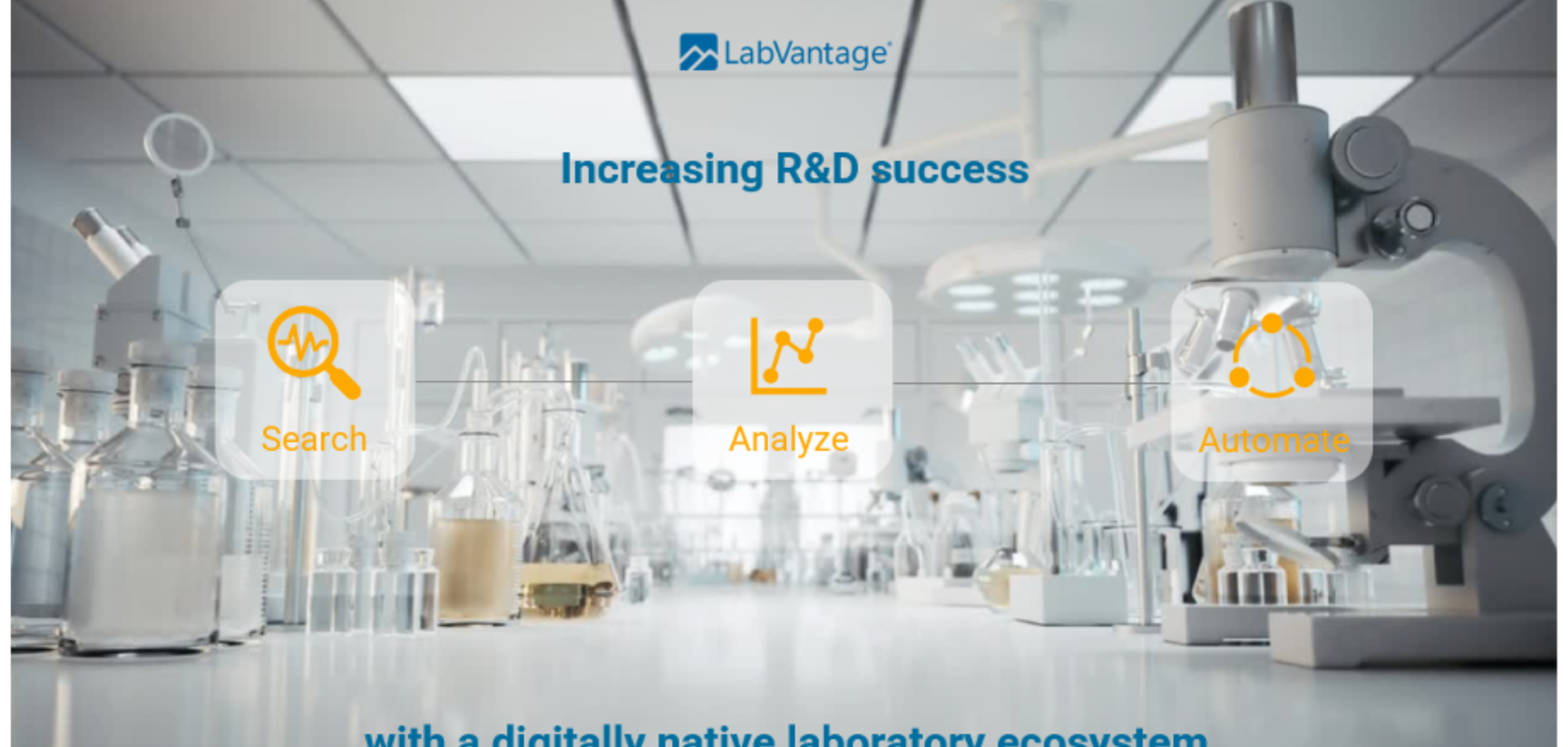We live in a world where disruptive technologies change our business and way of working at an ever-increasing pace. This suggests huge opportunities and significant challenges. The key business and value driver is most often accelerating the path from R&D to production, leveraging state-of-the-art technologies such as AI.
The vision of the digital native ecosystem offered by LabVantage is unique in its capability to provide both flexibility and dependability. LabVantage is the only organisation delivering the cornerstones of a digitally native ecosystem with three distinct product lines, which can be interconnected through a semantic layer by a single organisation. LabVantage’s established and certified LIMS/ELN environment enables automation; the LabVantage Analytics platform contributes the required analytical and AI/ML tooling, and LabVantage Search delivers powerful search capabilities and the interconnecting semantic layer, which opens up the ecosystem to any type of data resource and specialised tooling.
Shaping a customer-specific digital native ecosystem is all about good information to make good decisions at the right place, time, and purpose along the R&D, product life-cycle and beyond. At each step of the process, different capabilities of the cornerstones of the ecosystem come into play. When looking at a typical R&D process, the complexity of ensuring good information and good decision-making becomes apparent.
At the planning and design phase, the first port of call may be a document and literature search that could involve looking for both proprietary and public knowledge, possibly at the same time. This may include searching structured, semi-structured and unstructured data across multiple sources and data types to get to the relevant scientific information that will inform your experiment design and plan. The next stage may be identifying relevant data for experiment analytics if the goal is to optimise an experiment based on previous results and intelligence. Advanced analytics may be required to design an experiment with the greatest chance of success. Finally, an experiment plan may need to be created that utilises and summarises all of the above, so experiments can be performed accurately, and management can endorse the plan.
At the experiment phase, automating the laboratory workflow is important to eliminate mistakes and ensure accuracy, speed, and repeatability. The collection of results needs to be accurate and efficient, and it may be necessary to make decisions during the experiment – for instance, searching target chemical structures in analytical laboratories. It may also be important to test hypotheses ‘on the fly’, which could require inflight analytics during the experiment phase.
At the analysis phase, statistical modelling or advanced analytics may be needed to compare and contrast the results with existing data or to infer performance from the experiment results. Analytics at this stage typically needs to be descriptive as a bare minimum, but progressively may need to support predictive and prescriptive analysis as the R&D organisation seeks to leverage large quantities of data and AI to create and drive innovation.
At the review and decision-making phase, there is a need to visualise and report the results efficiently. This means reducing manual data preparation and report creation activities as much as possible to ensure the reports’ integrity. One may want to use AI and ChatGPT-like functionality to automate the summarisation of results, and analytics may be required to validate results. Reports that need to be submitted to regulators must, of course, be 100% accurate – streamlined analytics and reporting can play a major role here in eliminating errors and ensuring that 100% accuracy. Finally, all of this knowledge needs to be stored and re-usable in multiple places, such as a searchable knowledge base and the LIMS, all in a codified and efficiently repeatable way.
The above examples may manifest differently for each business, or business case, and will change and evolve over time. However, the three cornerstones of the digitally native ecosystem are a dependable and sustainable foundation to making an organisation fit for today and into the future, avoiding point solutions and dead-end developments.
For more information, visit www.labvantage.com


